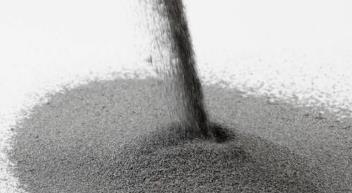There are many metal powders that can be used for 3D printing. So, to meet the material requirements of 3D printing, what conditions need to be met by metal powders?
1. Purity
Ceramic inclusions will significantly reduce the performance of the final product, and these inclusions generally have a higher melting point, which is difficult to sinter and shape, so there must be no ceramic inclusions in the powder.
In addition, the oxygen and nitrogen content also needs to be strictly controlled. At present, the powder preparation technology used for metal 3D printing is mainly based on the atomization method. The powder has a large specific surface area and is easy to oxidize. In special applications such as aerospace, customers have stricter requirements on this indicator, such as high-temperature alloy powder. The oxygen content is 0.006%-0.018%, the oxygen content of the titanium alloy powder is 0.007%-0.013%, and the oxygen content of the stainless steel powder is 0.010%-0.025%.

2. Powder morphology
The morphology of the powder is closely related to the preparation method of the powder. Generally, when the metal gas or molten liquid is transformed into a powder, the shape of the powder particles tends to be spherical. When the solid-state becomes a powder, the powder particles are mostly irregular shapes, and most of the powder prepared by the aqueous electrolysis method is dendritic.
Generally speaking, the higher the sphericity, the better the fluidity of the powder particles. 3D printing metal powder requires sphericity above 98%, so that powder spreading and powder feeding are easier to perform during printing.
3. Powder fluidity and bulk density
The fluidity of the powder directly affects the uniformity of powder spreading during the printing process and the stability of the powder feeding process.
The fluidity is related to the powder morphology, particle size distribution and bulk density. The larger the powder particles, the more regular the particle shape, and the smaller the proportion of extremely fine powder in the particle size composition, the better the fluidity; the particle density remains unchanged. As the relative density increases, the powder fluidity increases. In addition, the adsorption of water and gas on the surface of the particles will reduce the fluidity of the powder.
The bulk density is the powder mass per unit volume when the powder sample is naturally filled with the specified container. Generally, the coarser the powder size, the greater the bulk density. The powder with the finer and thicker can obtain a higher bulk density. The impact of density on the density of the metal printed final product is still inconclusive, but the increase in the bulk density can improve the flowability of the powder.
4. Powder particle size distribution
Different 3D printing equipment and forming processes have different requirements for powder particle size distribution. At present, the commonly used powder size range for metal 3D printing is 15-53μm (fine powder), 53-105μm (coarse powder), and can be widened to 105-150μm (coarse powder) in some cases.
The choice of metal powder particle size for 3D printing is mainly based on metal printers with different energy sources. Printers that use lasers as energy sources have a fine focus spot and are easier to melt the fine powder. It is suitable to use 15-53μm powder as consumables. The powder replenishment method is layer-by-layer powder coating; the powder-spreading printer with the electron beam as the energy source has a slightly coarse focus spot, which is more suitable for melting coarse powder, mainly suitable for the coarse powder of 53-105μm; for coaxial powder feeding type For printers, powder with a particle size of 105-150μm can be used as consumables.


